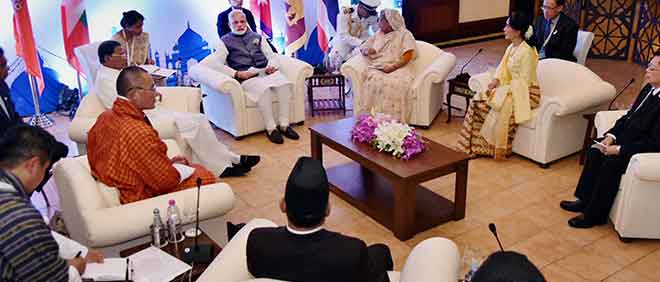South Asians integrate the least with each other as a region. Joyeeta Bhattacharjee of ORF, who studies the region, puts it down to fear of Indian domination (India accounts for 80% of the combined GDP and 74% of the combined population), historical mistrust (a colonial legacy) and targeted terrorism (a recent innovation of war by other means). Add to that a near universal reluctance to put trade above strategic diplomacy.
More recently, a muscular China has queered the pitch further for nascent regionalism by inducing Pakistan, Nepal and Sri Lanka to make an impossible choice between its somewhat exaggerated promises of a river of Yuan flowing into these economies versus the less tangible, long term, virtues of aligning with India’s soft power – democratic credentials, absence of territorial jingoism; ancient cultural links – Hinduism with Nepal, Buddhism with Nepal, Bhutan and Sri Lanka and historical links with Bangladesh, from the Mukti Bahini days when Indians fought and died with Bangladeshis for their freedom from the Pakistani Panjabi yoke.
It is no wonder then that substantive regionalism has yet to mature in South Asia. The political freeze between Pakistan and India since 2016, after the Uri terror attack, gives impetus to the concept of fractured regionalism. Professor Mahendra P. Lama of Jawaharlal Nehru University favours the concept of “Eastern South Asia” – Bangladesh, Bhutan, Nepal and the eastern and north eastern border states of India (BBIN). Substantive activity to enlarge connectivity and energy trade exists through bilateral and trilateral negotiations.
The peaceable settlement of border issues between Bangladesh and India is an illustration of the accommodative stance in the East versus entrenched positions on our Northern and Western borders.
Could the fracturing of South Asia help? A western sub region (Maldives, Afghanistan, Pakistan and Northern and Western India) where sub-regional links are stagnant and “Eastern South Asia” (ESA) with India as the transit hub spanning both sub regions.
The ponderously titled Bay of Bengal Initiative for Multi-Sectoral and Technical Cooperation (BIMSTEC) has been functional since 1997. It consists of five member countries, physically located around the Bay of Bengal – India, Bangladesh, Myanmar, Sri Lanka and Thailand and two land locked countries – Nepal and Bhutan, for whom the Bay is a strategic necessity for maritime access.


